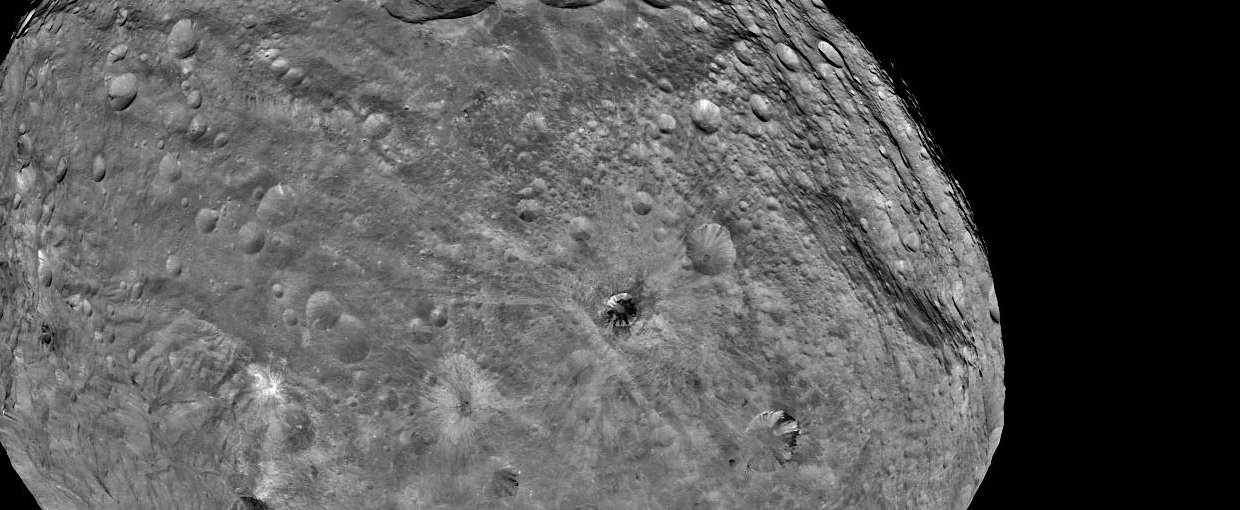
NASA-supported researchers have reported on the composition of 29 eucrites, which are meteorites that originated from the main-belt asteroid, Vesta. The study provides data on petrography, mineral chemistry, and whole rock major, minor, and trace element abundance.
Vesta is small (about the size of Saturn’s moon Enceladus), but it was thought to be large enough for its interior to differentiate in a way similar to planets; with an iron core, mantle and crust. The new results indicate that the interior Vesta could be more heterogeneous than larger planetary bodies, such as Mars and the Earth.
Vesta is the second largest body in the main asteroid belt of the Solar System. This object is a remnant left over from the early stages of the Solar System, a time when materials circling the young Sun were colliding and merging to form the planets. Studying Vesta’s evolution and composition can provide information about the early Solar System and the inventory of materials that were available as the Earth formed and became habitable for life as we know it.
In 2011, NASA’s Dawn mission arrived at Vesta and became the first spacecraft to orbit a body between Mars and Jupiter. Dawn confirmed that Vesta was the parent body of eucrites (as well as certain other meteorites found on Earth). These meteorites came from an impact event that created Vesta’s large south polar basin, and this finding provided a connection between samples on Earth and a specific event on a distant, small world. The mission went on to visit the dwarf planet Ceres, the largest object in the main asteroid belt.
The study, “Pristinity and petrogenesis of eucrites,” was published in the journal Meteoritics and Planetary Science.
